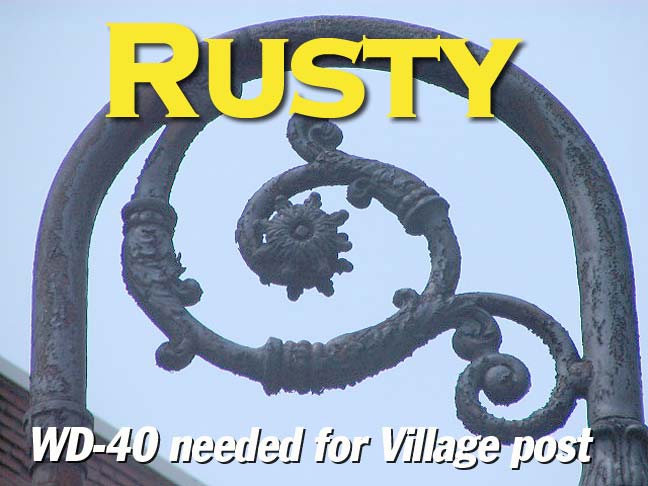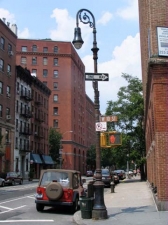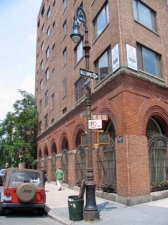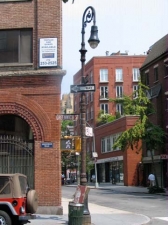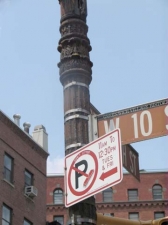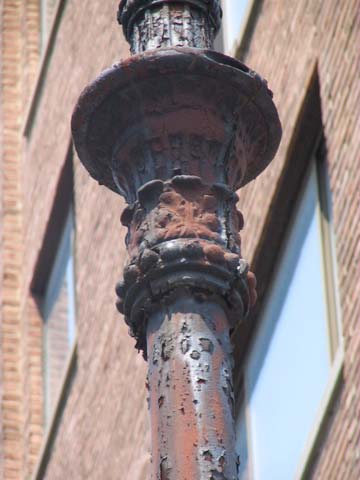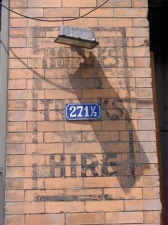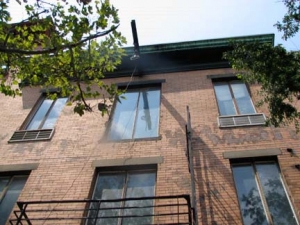Even as NYC’s Department of Transportation has been installing retro Bishop Crooks and retro M24 longarm Corvingtons, and even some scattered reverse scroll Type F’s and Lyres around town (forgive me, you have to be a lamppost maven to understand me at times) it unconscionably permits some of its ancient treasures to rust, wither, and die.
One such situation is in Greenwich Village, on the northeast corner of Greenwich Street and West 10th Street, where there’s a battered, weathered, deteriorated, blasted, neglected, degeneratted, atrophied, but yet compellingly importunate post that has been flaking away for ninety years or more.
Except for the newer cars, modern signage and Spring City luminaire (likely the 5th or 6th luminaire to be attached to the post) architecture on his block has changed so little that this may as well be 1935.
A closer look at the post reveals it’s in bad shape, with peeling paint and rust. A regular paint job or even an application of WD40 every once in awhile would enable this post to have a much better chance of surviving for more than the next 5 or ten years, which is about what I give it.
Bishop Crook designer Richard Rogers Bowker included all kinds of Beaux-Arts gewgaws and decorations on the Crook post, originally introduced about 1896.
This element once carried brackets for street signs (in Manhattan) navy blue and white ‘humpbacked’ signs that indicated the cross street on the hump.
Meanwhile, just across the street at the NW corner of Greenwich and West 10th, we see evidence of NYC’s equine-intensive past, as abuilding is still emblazoned with a “boarding stable” sign; at 271 and 271 1/2 West 10th, a building is still outfitted with a hoist for delivering hay. These signs date from a transitional period: “horses and trucks for hire” and “gasoline for sale.”
Photography: September 2008; Page completed November 12, 2008

